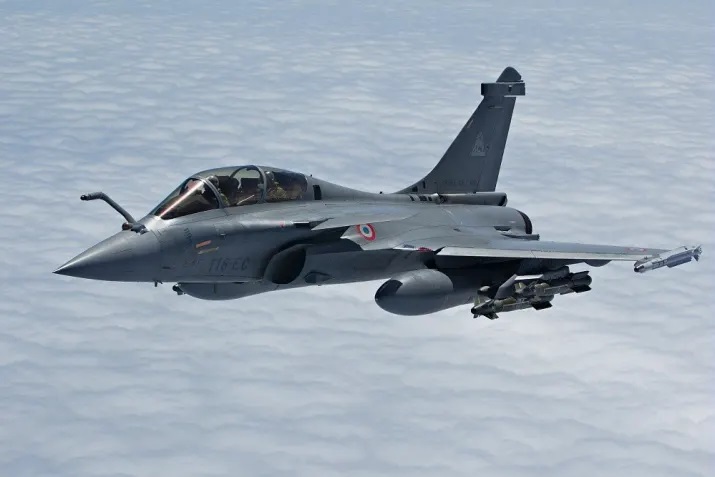Amid the border row with China, the Indian armed forces successfully test-fired the BrahMos supersonic cruise missiles in the past few days while Indian Air Force jets including the Rafales, Su-30MKIs, and others remain alert against any possible Chinese movement.
While the Indian Air Force is planning to equip its advanced fighter jets with BrahMos, the question arises as to how the formidable weapon can be fired from combat aircraft such as the Rafales, Su-30MKIs, and HAL Tejas.
The BrahMos supersonic cruise missile has been developed from the P-800 Oniks, in a joint venture between the Indian DRDO and the Russian NPO Mashinostroyeniya. As of 2020, the missile is one of the world’s fastest missiles in operation, reaching speeds of 1.2 kilometers per second.
While originally developed as an anti-ship cruise missile, different variants of BrahMos have been built, including surface-to-surface, land attack, and air-launched cruise missiles.
According to reports, the BrahMos-NG (Next Generation), which is a smaller and lighter version of the existing one, is compatible with the French-made Rafale.
The BrahMos-NG is expected to have the same range of around 290 kilometers along with a speed of Mach 3.5. Weighing around 1.5 tons, 5 meters in length, and 50 cm in diameter, the missile is 50 percent lighter and three meters shorter than its predecessor.
By the time the BrahMos NG missiles are ready by 2021, they could be deployed on the Rafales as either a twin or single-weapon loadout.
The 36 Rafales acquired by India are set to boost the IAF’s attack capabilities as they will be loaded with 13 India-specific enhancements.

The fighters already boast the ability to take off from high altitude airbases like Leh and will don a killer look when armed with the BrahMos missile.
The BrahMos, along with the MBDA Scalp low-observable air-launched cruise missile, will provide the Indian armed forces with unique subsonic/supersonic stand-off attack options, which are not available with any other air force in the world.
The BrahMos missile has been developed as a tactical superiority weapon in order to provide the Indian armed forces an edge over its rivals, especially China.
The air-launched variant of the missile, called the BrahMos-A, has been integrated into the airframes of IAF’s Su-30MKI aircraft.
According to Boris Obnosov, CEO of Tactical Missiles Corporation (TMC) JSC, the missile is likely to significantly increase IAF’s capabilities.
“The BrahMos’s launch range to the target is 300 km, while Su-30MKI jet fighter’s range with air refueling is over 3,000 km – together. This provided [Indian] Air Force with a huge advantage in their actions in the Indian Ocean zone,” said Obnosov.
The Russian-made Su-30MKI is a state-of-the-art, all-weather, multi-role fighter jet that is capable of carrying out air defense, ground attack, and maritime missions.
According to India’s Chief of Defense Staff, General Bipin Singh Rawat, the fighter when armed with BrahMos will prove to be vital in the Indian Ocean Region (IOR). “The Su-30MKI aircraft, along with the BrahMos, will be a game-changer and extensively enhance the security of the maritime domain.”
The missile has been looked forward as a key alternative on India’s indigenous HAL Tejas fourth-generation fighter jet.
According to reports, the light fighter jet is likely to be deployed with the BrahMos-NG missile, which can destroy an enemy’s AWACS (Airborne Warning and Control System) aircraft.
Also known as the ‘Eye in the Sky’, AWACS aircraft are considered integral to modern warfare, due to their ability to detect and track incoming fighters, cruise missiles, and drones much before ground-based radars, and direct friendly fighters during air combat towards enemy jets.
Since the AWACS is capable of monitoring enemy troop build-ups and the movement of warships, the Tejas fighters are seen to be immensely vital in shooting down such aircraft with the help of BrahMos missiles.




